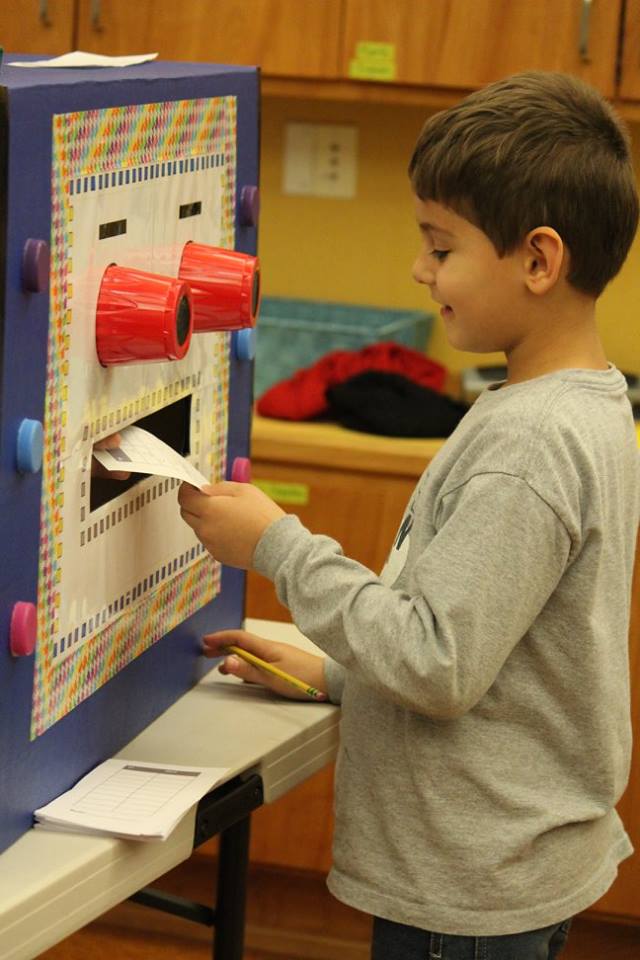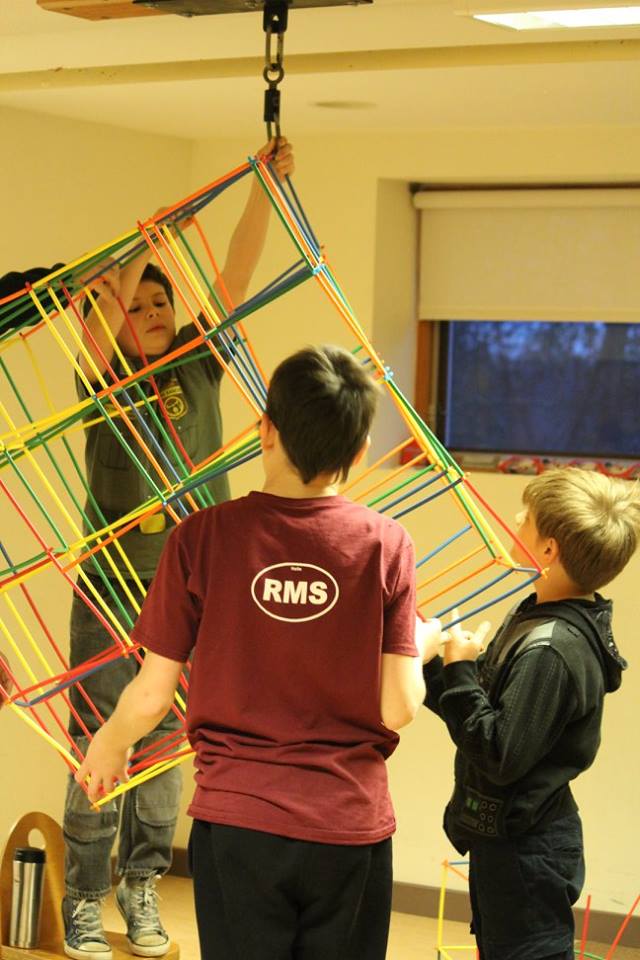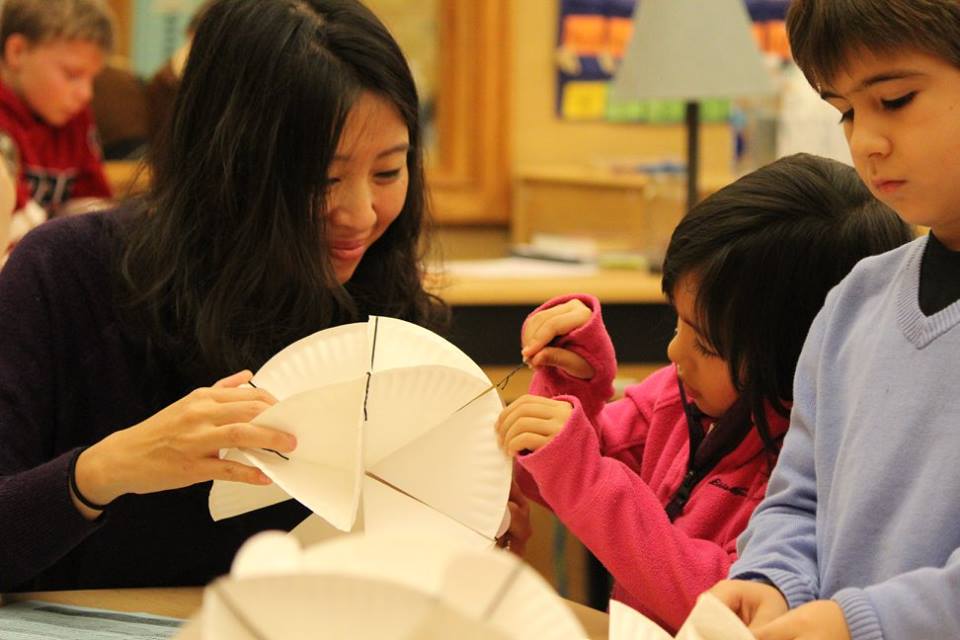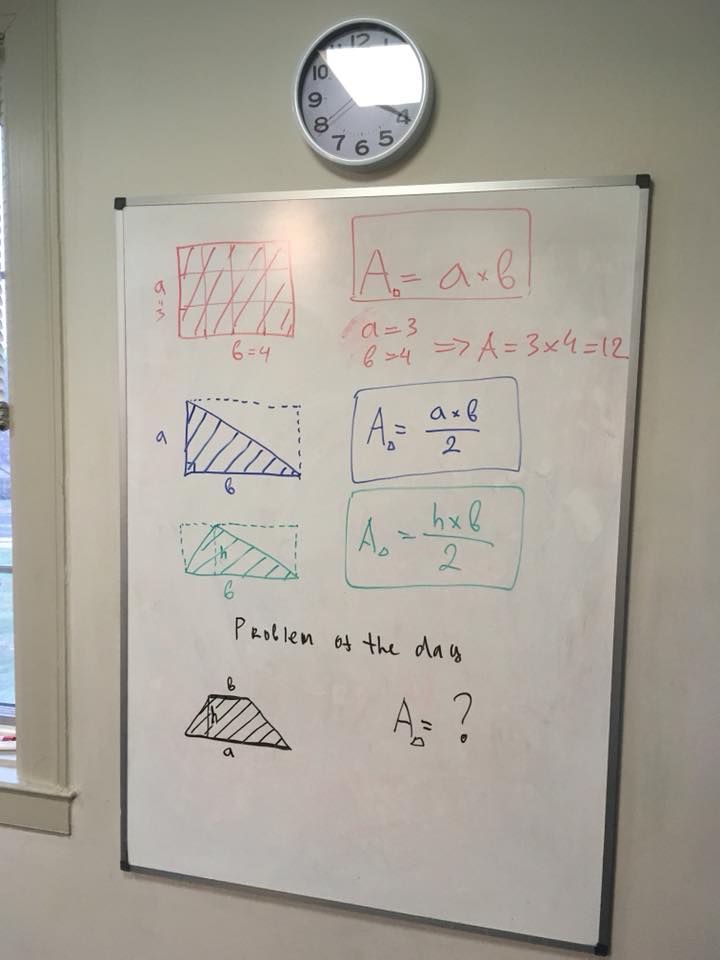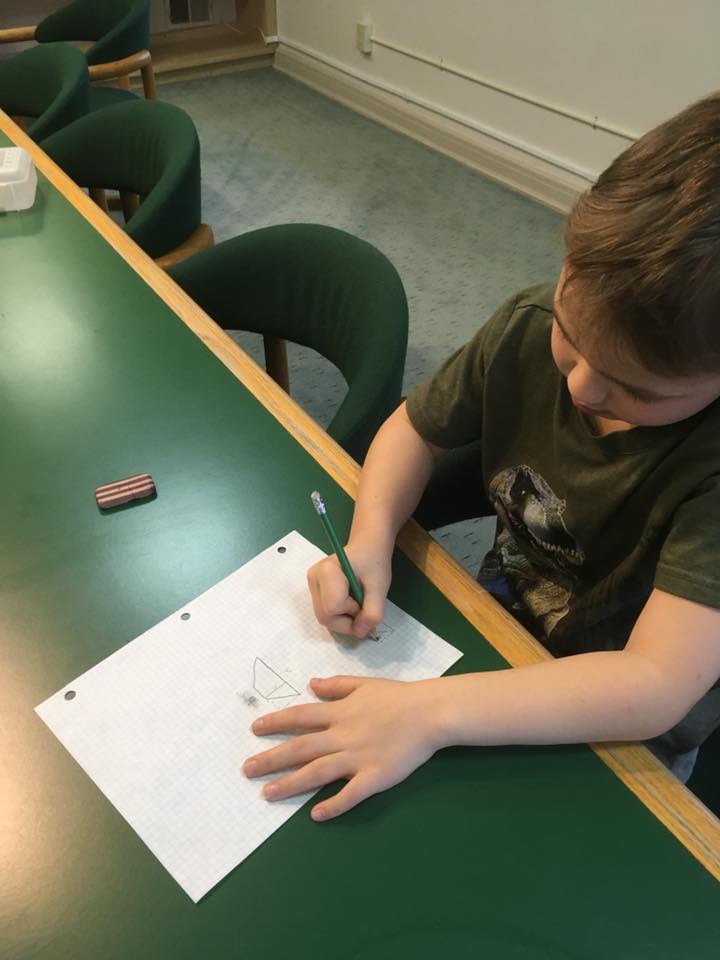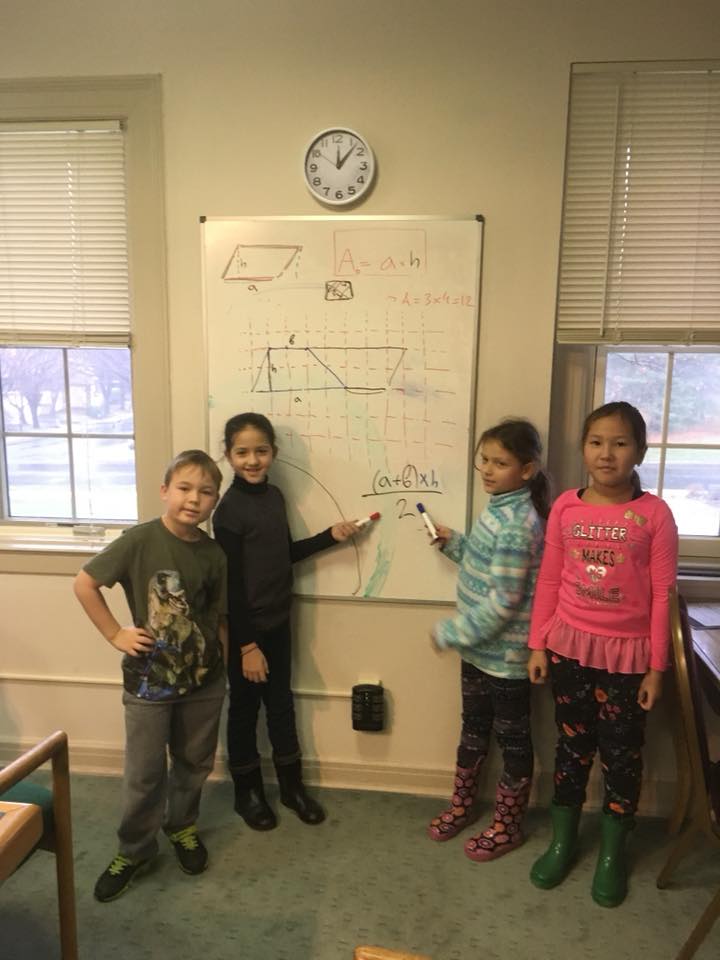It was a rainy day in the middle of summer vacation. Ben and Zoe (6 and 5 yo) were home together because they were too young to join their older siblings on their adventure. They were a little sad and not sure what to do.
“Let’s do some math,” Zoe’s mom suggested.
“Okay…” they agreed somewhat reluctantly.
“But no pluses or minuses,” said Zoe.
“I like multiplication,” chimed Ben.
“I have an idea,” said mom and took out a book that Zoe and Ben had never seen before.
“How many?” Ben read the cover. “I know,” he said. “It’s a fraction book.”
“Why do you think that?” asked Zoe’s mom.
“Because I saw the back of the book,” Ben explained.

“I guess we’ll see,” said Zoe’s mom and opened the book.
On the inside cover there was a picture.

“How many?” asked Zoe’s mom.
“How many apples?” Ben replied with a question of his own.
But Zoe was already busy counting away. Before Ben or mom could say anything else, Zoe exclaimed, “Nine!”
Ben looked at the picture again. “No, it’s eight,” he said. “Look, it’s three, three, and two,” he continued, pointing to groups of apple pieces.
“But you forgot the middle piece,” countered Zoe.
“That one doesn’t count.”
“Yes it does,” insisted Zoe.
“No, it doesn’t, because you don’t eat it,” Ben explained.
At this point they both looked at mom, expecting her to settle the dispute.
“You’re both right,” she said. That caused some confused looks. “Well, I didn’t say how many what, so you can count whatever you want.” The confusion turned to excitement.
“Then I can count apples,” Ben said. “There’s one apple. And I know what that other thing is. It’s an apple cutter, and there’s one of those. I’ve seen them before and they’re really cool.”
Once they felt like they were done with both sides of the cover, they decided to continue exploring the book. On the next few pages, they had some fun conversations involving shoes, laces, eggs, cartons, dozens, omelets, yolks, and more. They then came to this page.
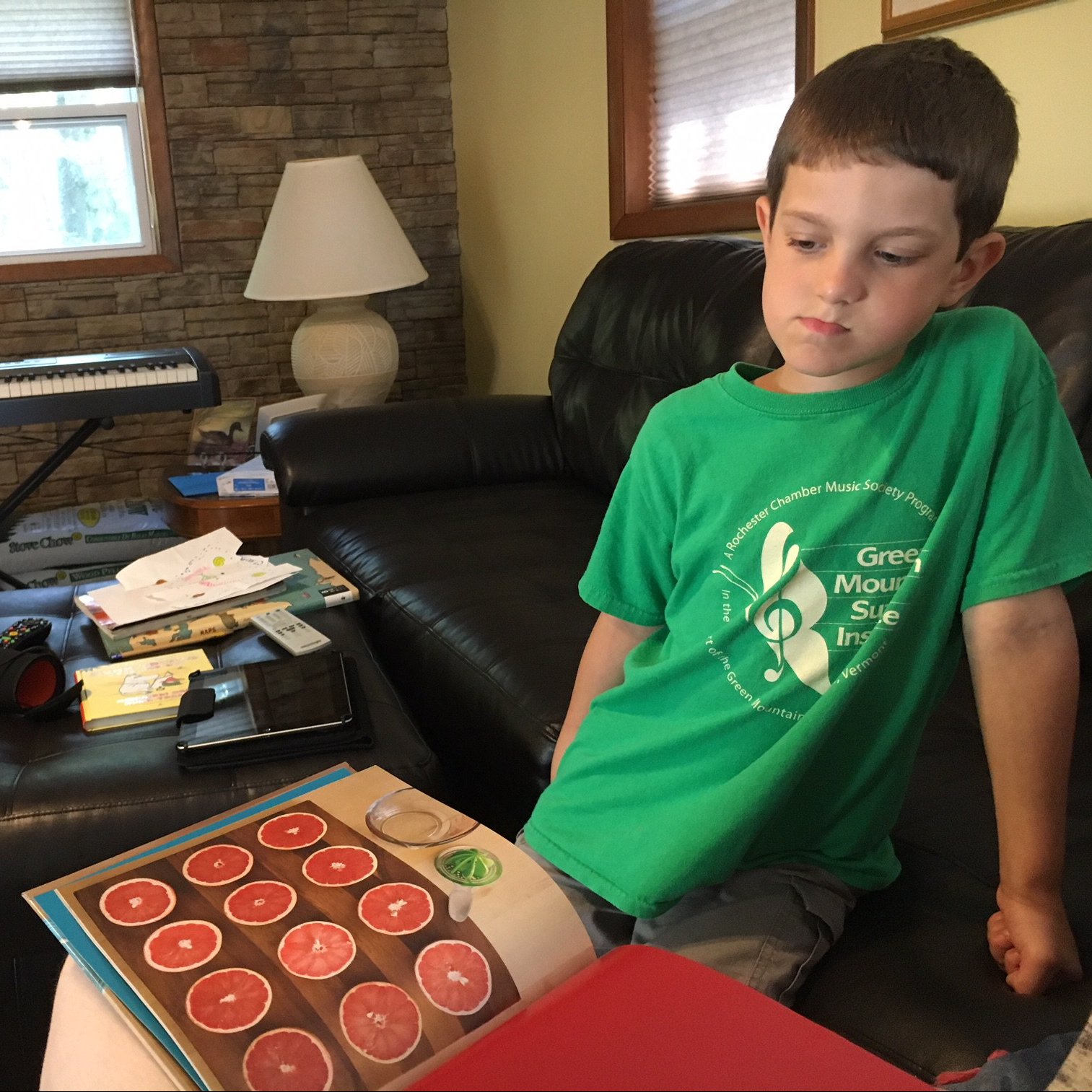
“How many?” mom asked.
Ben said, “12 grapefruits.”
“No, these are halves,” said Zoe.
“They’re not halves,” insisted Ben. “They’re fractions, but not halves.”
“What fraction do you think they are?” asked mom carefully.
“I don’t know, eighths?”
“So you think that eight of them make a whole grapefruit?”
“No. Two of them do. But they’re still not halves,” said Ben, almost mysteriously.
Meanwhile, Zoe paired up the “not halves” with her fingers and announced that there are six grapefruits. Ben agreed with that analysis and added that there is one cup and one green thing. Mom explained that the green thing is called a squeezer. “Oh, it’s to make juice,” said Ben excitedly.
This nicely foreshadowed the next page on which they had a discussion about squeezing the grapefruits, taking out the seeds, measuring the amount of juice, and drinking it.
And then came the avocados.
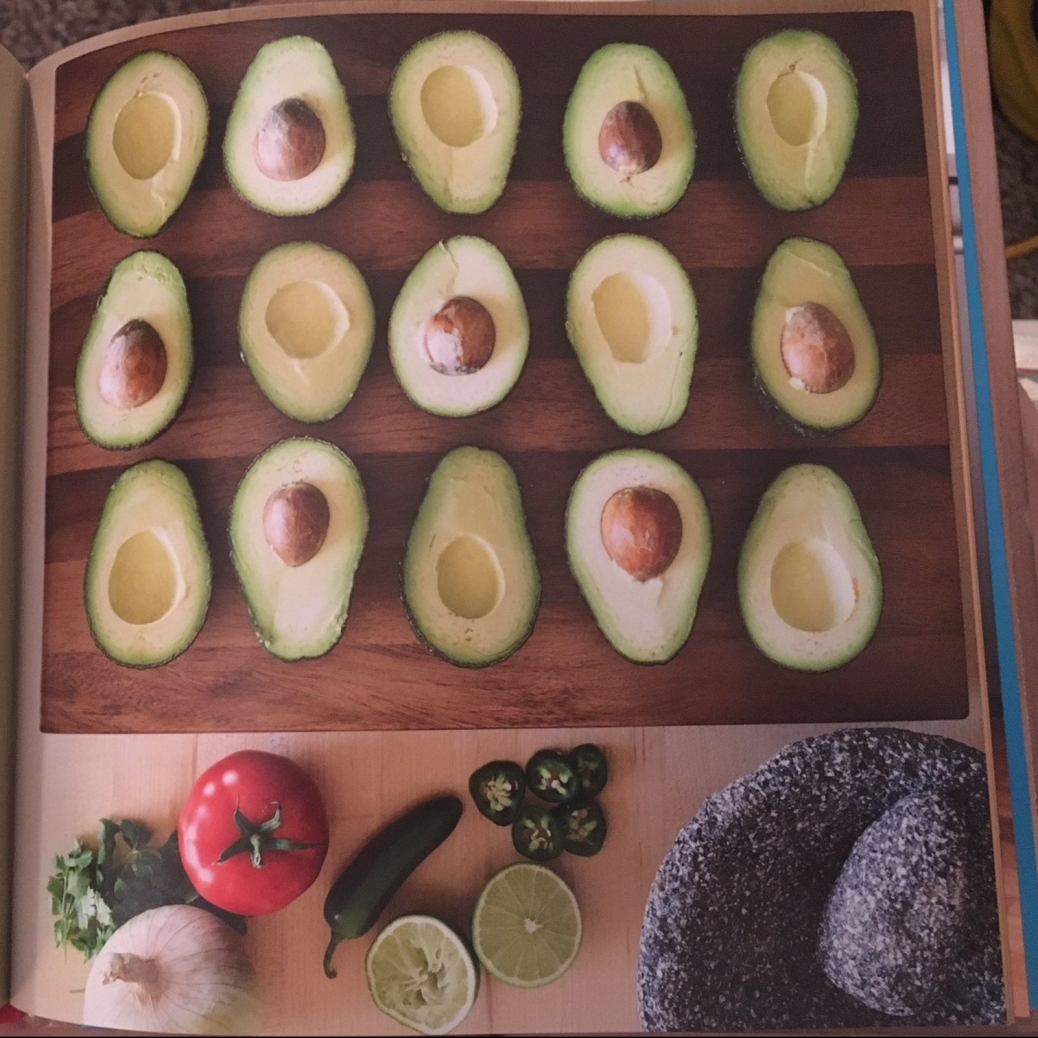
Ben quickly looked at the picture and declared that there were 15 avocados.
“No, those are not whole avocados,” Zoe disagreed.
“Ah, we need to divide by 2 to get the number of whole avocados,” said Ben. “But wait, 15 cannot be divided by 2. I told you it was a book about fractions!”
But Zoe was already doing her usual thing of pairing up the “halves” with her fingers.
“There are seven and a half avocados,” she declared.
“What do you think they did with the other half?” asked mom.
“They squeezed it!” exclaimed Ben.
And so they continued, page after page. Many heated discussions were had, about eggs, pizza, pies, utensils, shoes, and so much more!
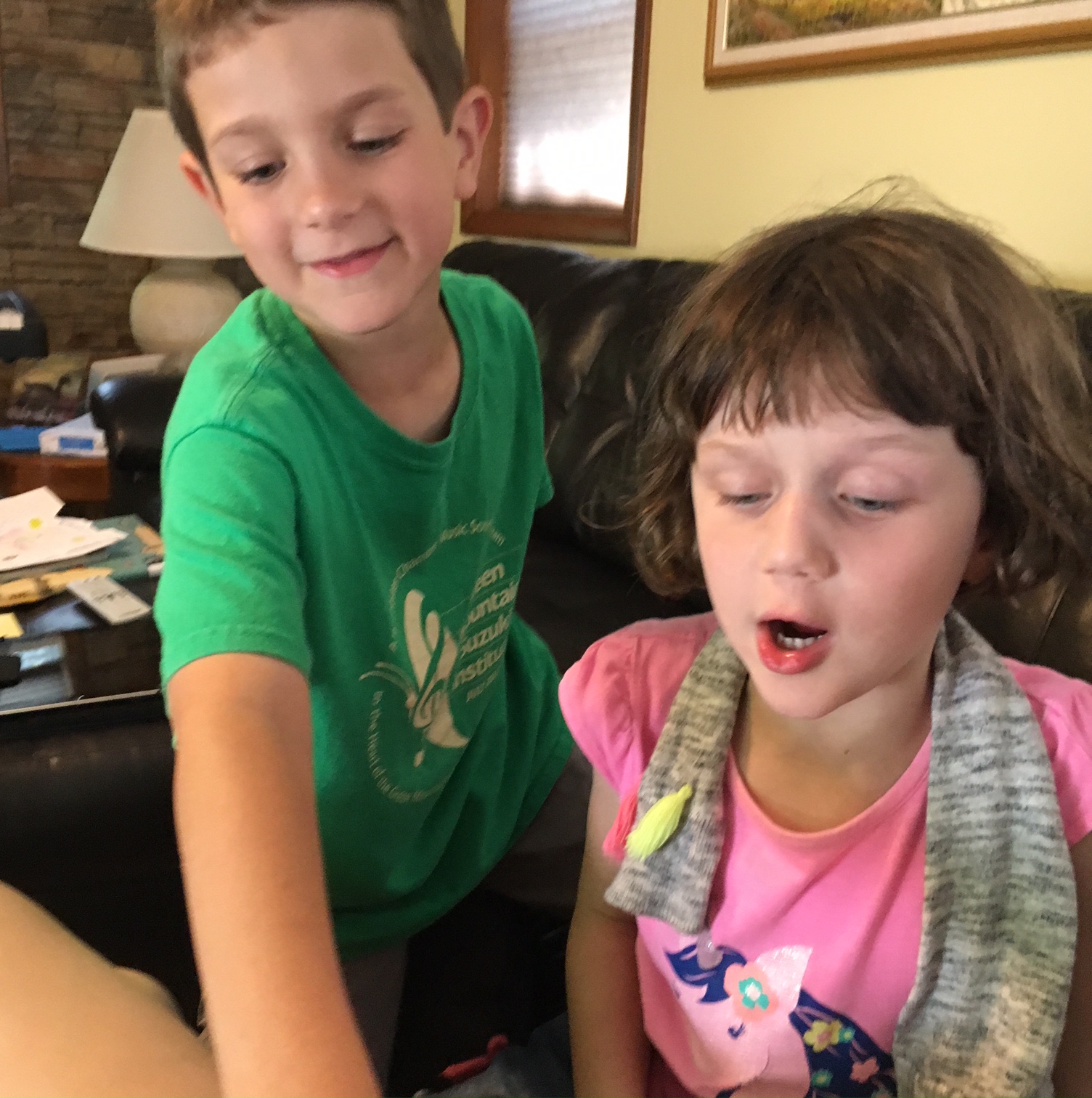
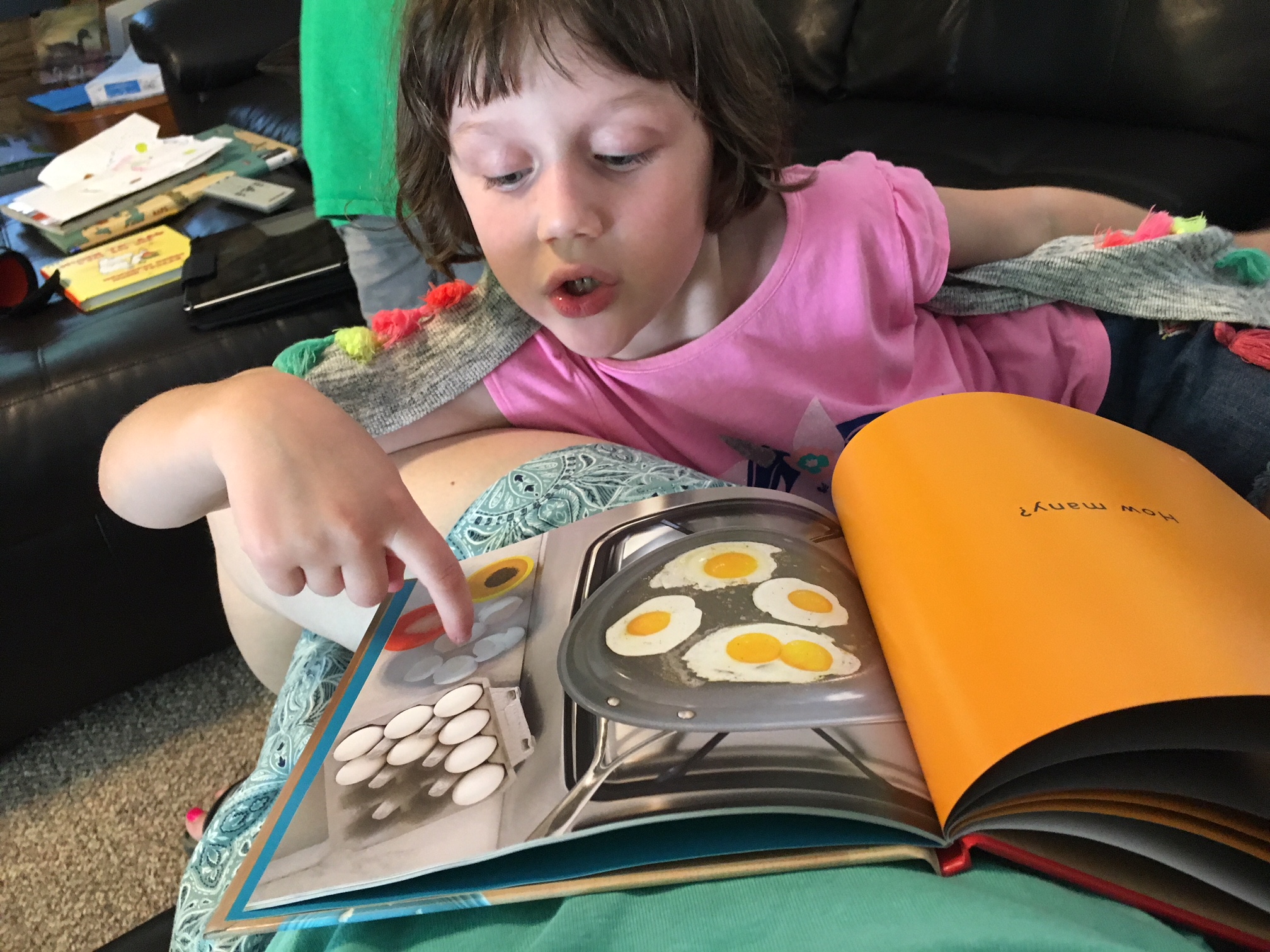
And when every page was flipped and the back cover was done with, but Ben and Zoe kept requesting more, mom suggested that they each make one of their own for her and for each other.
The kids happily agreed. Ben drew his very quickly, but then kept adding more things to it. It had the extra challenge of figuring out the “what?” in addition to the “how many?”

Zoe kept starting over, but finally also came up with something she was happy with. Those funny letters spell the word for “how many?” in Russian.

Zoe’s mom had a lot of fun answering their questions of “how many?” Now it’s your turn to play!
This adventure was made possible by the How Many? book by Christopher Danielson.





















